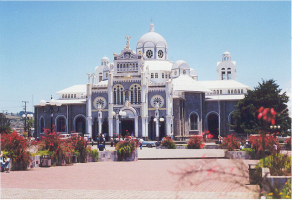Top 9 Most Beautiful Historical Sites in Germany
Tourists are lured to Germany, one of Europe's major countries, by its natural beauty, prominent cities, lengthy and complicated history, and, of course, beer. ... read more...There are several churches, museums, and castles to visit. From the old Brandenburg Gate to the exquisite Würzburg Residence to the Gothic Cologne Cathedral, here is a selection of the most beautiful historical sites in Germany that not to be missed.
-
The Brandenburg Gate, which functioned as a city entryway between 1788 and 1791, is one of the most beautiful historical sites in Germany. It was commissioned by Prussian King Frederick William II and stood at the entrance to Unter den Linden Boulevard, which led to the city palace.
When West German Chancellor Helmut Kohl walked through the gate to meet East German Prime Minister Hans Modrow on December 22, 1989, as part of the reunification of East and West Berlin, the gate was reopened. The Brandenburg Gate became a symbol of German reunification after the collapse of the Berlin Wall.
The Brandenburg Gate has been a venue for key historical events throughout its history, and it is now seen not just as a symbol of Germany's and Europe's turbulent past, but also of European unification and peace.
Location: Pariser Platz, 10117 Berlin
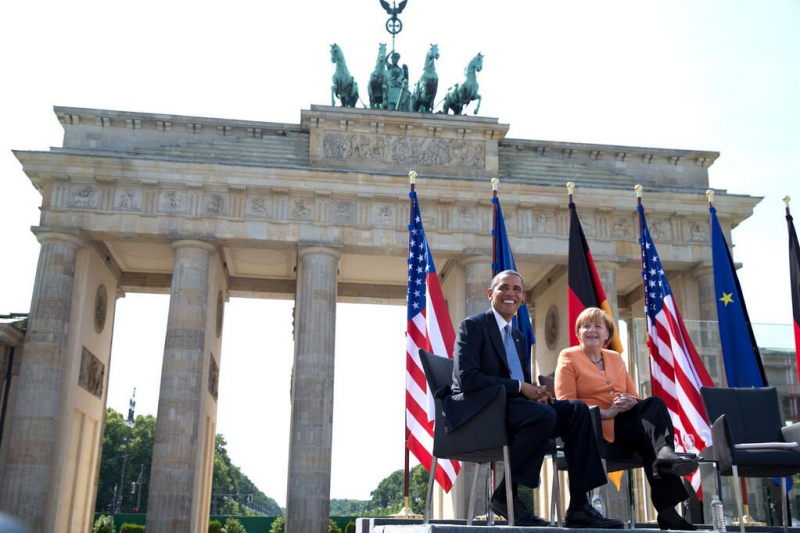
Photo: Culture Trip -
From 1961 to 1989, the Berlin Wall was a fortified concrete barrier that separated Berlin physically and ideologically, as well as enclosing and dividing West Berlin from East German territory. On August 13, 1961, the German Democratic Republic (GDR, East Germany) began construction on the wall.
West Berlin was blocked off from the rest of East Germany, including East Berlin, by the Berlin Wall. Guard towers were erected along enormous concrete walls, and a vast region (later dubbed the "death strip") was dotted with anti-vehicle trenches, nail beds, and other fortifications. The Eastern Bloc described the Wall as a barrier protecting its citizens from fascist groups plotting to block East Germany's "will of the people" from establishing a socialist state.
Prior to the construction of the Berlin Wall, 3.5 million East Germans defied Eastern Bloc emigration regulations and defected from the GDR, many by crossing the border from East to West Berlin, from where they could go to West Germany and other Western European nations. Almost all such exodus was stopped by the Wall between 1961 and 1989. Over 100,000 individuals attempted to flee at this time, and over 5,000 people succeeded in crossing the Wall, with a death toll in and around Berlin varying from 136 to more than 200.
Location: Berlin
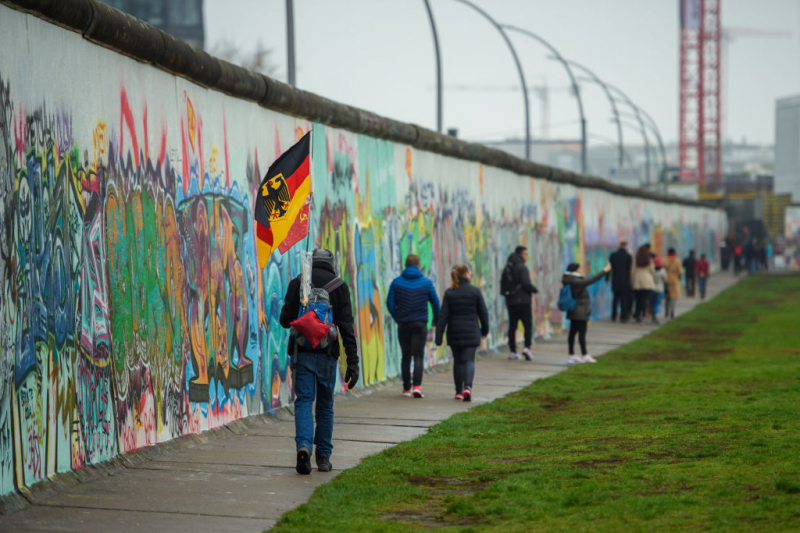
Photo: news.artnet.com 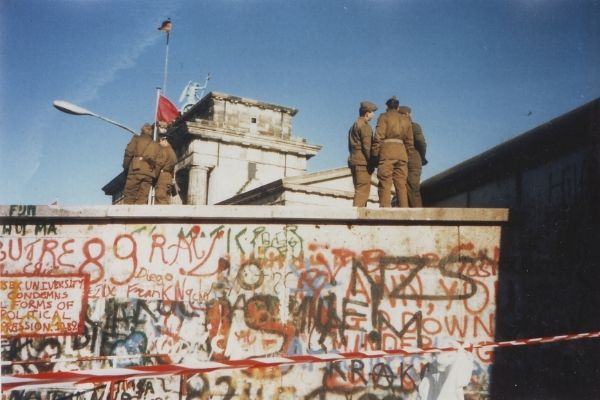
Photo: Wikipedia -
The Reichstag is another most beautiful historical site in Germany, having stood quite witness to the violent history of not only Berlin but Germany as a whole. It also serves as the seat of the German parliament.
It was built to host the German Empire's Imperial Diet (German: Reichstag). It was built in 1894 and served as the home of the Diet until 1933 when it was badly destroyed by fire. The building was decommissioned after WWII, and the German Democratic Republic's parliament (the Volkskammer) met in the Palast der Republik in East Berlin, while the Federal Republic of Germany's parliament (the Bundestag) met in the Bundeshaus in Bonn.
The Reichstag's huge glass dome provides a 360-degree view of the surrounding Berlin cityscape. The parliament's main hall (debating chamber) is visible from inside the dome, and natural light from above filters down to the parliament floor. A big sun shield electronically tracks the sun's movement and prevents direct sunlight, which would not only produce excessive solar gain but also dazzle people below. The construction was completed in 1999, and the Bundestag took over as the seat of parliament in April of that year. Visitors must register in advance to enter the dome.
Location: Platz der Republik 1, 11011 Berlin
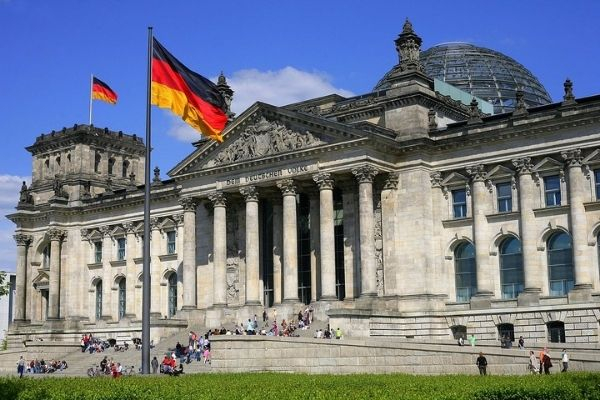
Photo: http://redsvn.net/ 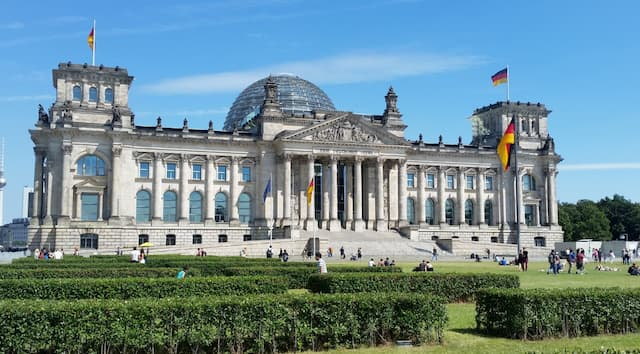
Photo: khamphachauau.net -
Cologne Cathedral (Kölner Dom) is a massive Gothic cathedral in Cologne, Germany, that took over 600 years to finish. It is Cologne's second tallest skyscraper, visible from practically every location in the city. The current Cologne Cathedral was built in 1248 on the site of a Roman villa considered to date back to the 4th century, as well as many ever bigger churches.
The construction of Cologne Cathedral began in 1248 and was left incomplete in the years around 1560. Attempts to finish the project began in 1814, but it didn't get off the ground until the 1840s. In 1880, the structure was finished according to its original Medieval design.
The architects of Cologne's medieval cathedral designed a large construction to contain the Three Kings' reliquary and fit the city's function as a site of worship for the Holy Roman Emperor. Despite the fact that it was left unfinished throughout the medieval period, Cologne Cathedral was finally completed as "a masterwork of great intrinsic worth" and "a striking testament to the strength and tenacity of Christian conviction in medieval and contemporary Europe." Only the telecoms tower surpasses the church in height.
Location: Domkloster 4, 50667 Köln
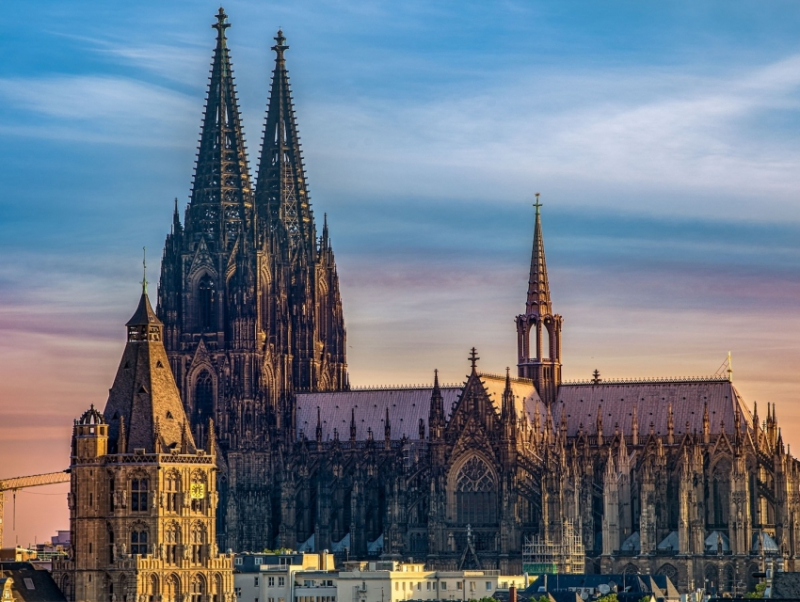
Photo: cityseeker.com 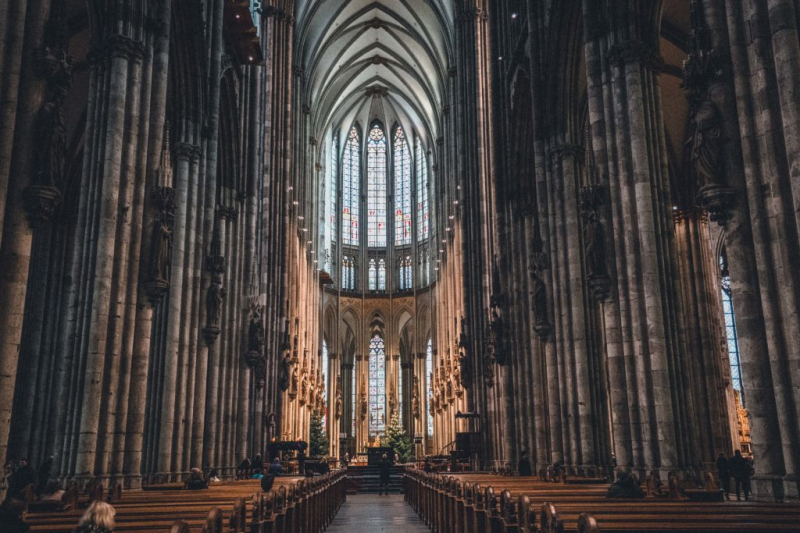
Photo: www.solosophie.com -
The Dachau Concentration Camp (KZ-Gedenkstätte Dachau) was one of the first of many concentration camps established by the Nazis as part of their extermination effort to jail and exterminate selected people.
Standing cells, floggings, the so-called tree or pole hanging, and standing at attention for exceptionally extended periods of time were all options for prisoners who lived in constant fear of severe punishment and terror incarceration. At the camp, there were 32,000 recorded deaths and thousands of unreported deaths. At the time of release, approximately 10,000 of the 30,000 captives were unwell.
The Dachau Concentration Camp was used to imprison SS soldiers awaiting trial in the postwar years. It housed ethnic Germans who had been evicted from Eastern Europe and were waiting to be resettled after 1948, and it was also utilized as a US military installation during the occupation. In 1960, it was eventually shut down.
The Memorial Site, which is open to the public, has various religious memorials and in the list of the most beautiful historical sites in Germany. Today, the site of the Dachau Concentration Camp holds a monument to those who suffered and died as a result of the Nazis: plan on spending at least half a day here to take it all in and absorb it.
Location: Upper Bavaria, Southern Germany
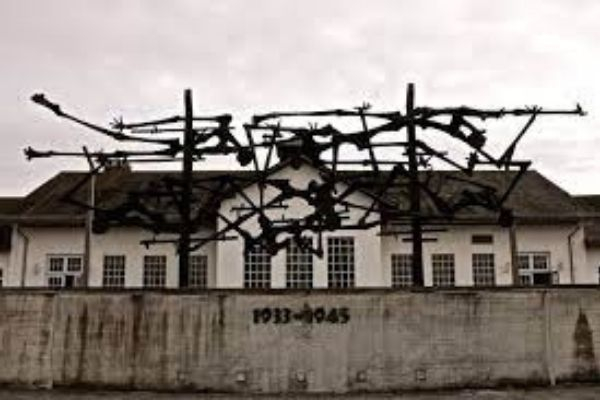
Photo: www.liberationroute.com 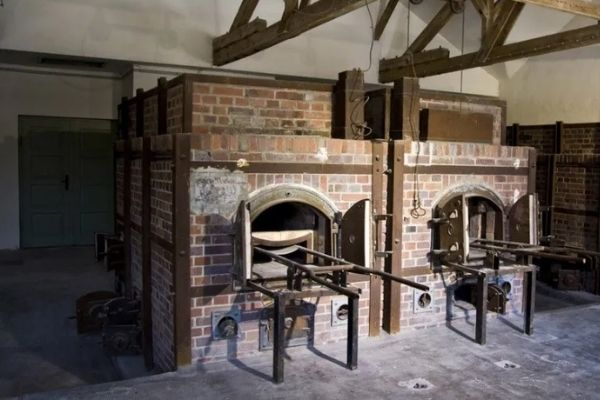
Photo: www.civitatis.com -
The Lübeck Town Hall (Lübecker Rathaus) is a magnificent medieval edifice that originated as a cloth hall in the 13th century. Lübeck Town Hall, one of Germany's most beautiful historical sites, is a brick Gothic edifice that has been added to over the years.
The Renaissance style left its imprint on Lübeck's Town Hall in the 1570s, when a spectacular sandstone bower replaced the exposed Gothic shield wall. An enormous battle chamber was reached through a lovely Renaissance staircase. The Hanseatic League's overwhelming role in Lübeck's economic and political character was reflected in the town hall's name, Hansesaal, which even made war and peace decisions.
In the 19th century the Hansesaal was replaced by office space and with the construction of the Citizen’s Hall, the stock exchange hall disappeared. In March 1942 during heavy air raids, the war room was destroyed.
Even today, Lübeck’s Town Hall continues to serve as the city’s administrative headquarters and meeting place of the city parliament. The halls are open to visit by guided tours, a highlight being the splendid Audience Hall, decorated in the lush Rococo style of 1755 depicting the virtues of a good government.
Location: Markttwiete 13-17, Lübeck
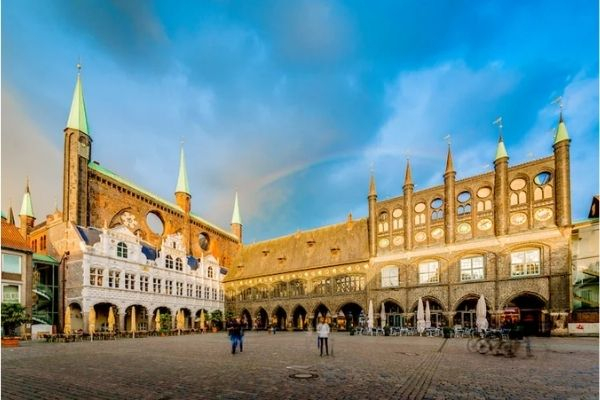
Photo: www.historyhit.com 
Photo: https://www.flickr.com/ -
If Holstentor seems familiar, it's possible you've seen it on a German two-euro coin. Holstentor (also known as Holsten Tor or Holsten Gate) was built in the 15th century as part of the Hanseatic city of Lübeck's medieval defenses. It is one of only two of the city's original four gates, the other being Burgtor.
These city gates started out as modest gates that were gradually strengthened through time to include an outside, middle, and inner gate. Only parts of these historic city gates survive today. The previous Interior Citadel Gate is now known as the Citadel Gate; the Middle and Outer Citadel Gates are no longer in use. All three Mill Gates have vanished totally. The current Holsten Gate was formerly known as the Middle Holsten Gate; there was also an (earlier) Inner Holsten Gate, an Outer Holsten Gate, and a fourth gate, known as the Second Outer Holsten Gate. As a result, the Holsten Gate's history is really the history of four gates in succession, but only one of them is still standing.
Holstentor is now one of the many structures that make up the UNESCO Hanseatic City of Lubeck complex. The city museum of Lübeck is housed in a medieval treasure that seems like it came right out of a storybook.
Location: Holstentorplatz, 23552 Lübeck
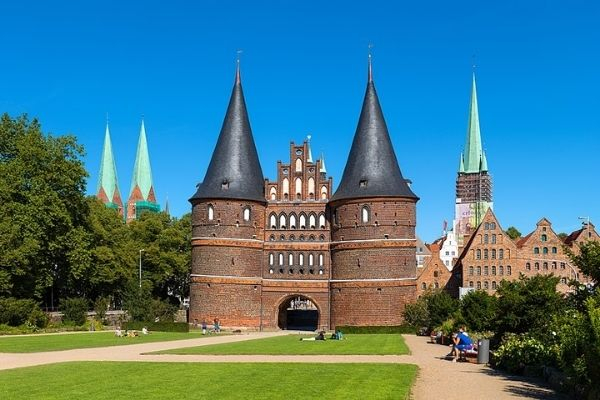
Photo: commons.wikimedia.org 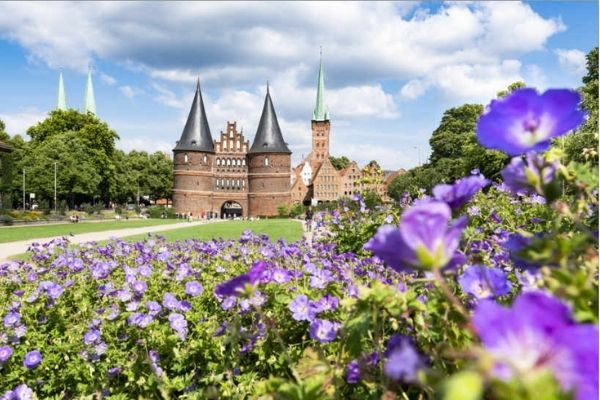
Photo: www.posterlounge.com -
The Frauenkirche is a church in Munich, Bavaria, Germany, that serves as the cathedral and seat of the Archbishop of Munich and Freising. It is a symbol of the Bavarian capital city and serves as a landmark. Locals refer to the church as "Frauenkirche" despite the fact that it is called "Münchner Dom" (Munich Cathedral) on its website and URL.
The church towers are highly visible due to local height restrictions. The municipal government has prohibited structures with a height above 99 meters in the city center as a result of the close conclusion of a local referendum. Since November 2004, this limitation has been temporarily extended outward; as a result, no structures exceeding the aforementioned height may be constructed in the city. After its current renovation, the south tower, which is normally open to those wishing to climb the stairs, will provide a unique view of Munich and the nearby Alps.
Location: Dresden, Germany
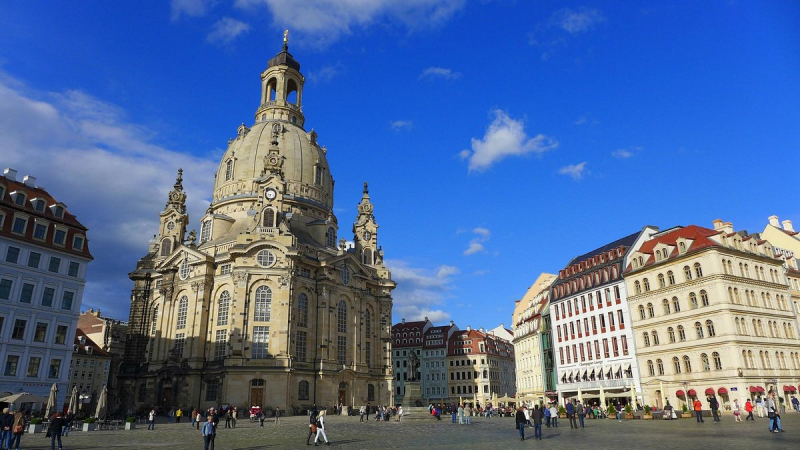
Photo: www.tripadvisor.com.vn Video: Visit Dresden -
In Würzburg, Germany, the Würzburg Residence (German: Würzburger Residenz) is a palace. The building was overseen by Johann Lukas von Hildebrandt and Maximilian von Welsch, representatives of the Austrian/South German Baroque style, as well as Robert de Cotte and Germain Boffrand, followers of the French Style. The Residence was designed by Balthasar Neumann, the court architect of the Bishop of Würzburg, and was commissioned by the Prince-Bishop of Würzburg Johann Philipp Franz von Schönborn and his brother Friedrich Carl von Schönborn in 1720 and finished in 1744. The building's paintings were painted by Giovanni Battista Tiepolo, who was aided by his son Domenico.
The great staircase, the chapel, and the Imperial Hall are all regarded as masterworks of Baroque/Rococo or Neoclassical architecture and art. Napoleon is said to have referred to the structure as the "biggest parsonage in Europe." Allied bombing severely destroyed it during WWII, and restoration work has been ongoing since 1945. Because of its remarkable Baroque art, design, and architecture, the Residence has been a UNESCO World Heritage Site since 1981.
The "Residence is a record of European culture," according to UNESCO, which designated Würzburg as a World Heritage Site in 1981. Perhaps no other monument from the same era can boast such a talent synergy."
Location : .Residenzpl. 2, 97070 Würzburg
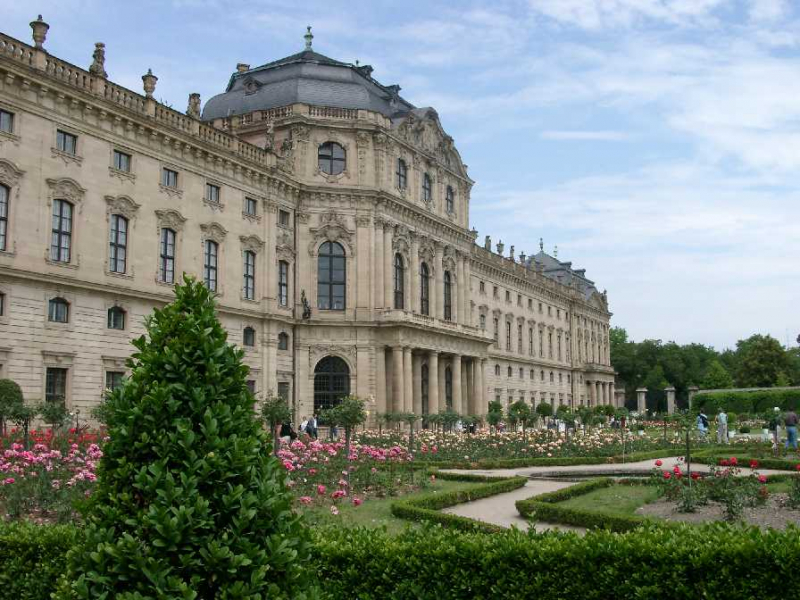
Photo: Wikipedia Video: World Heritage Journey





























